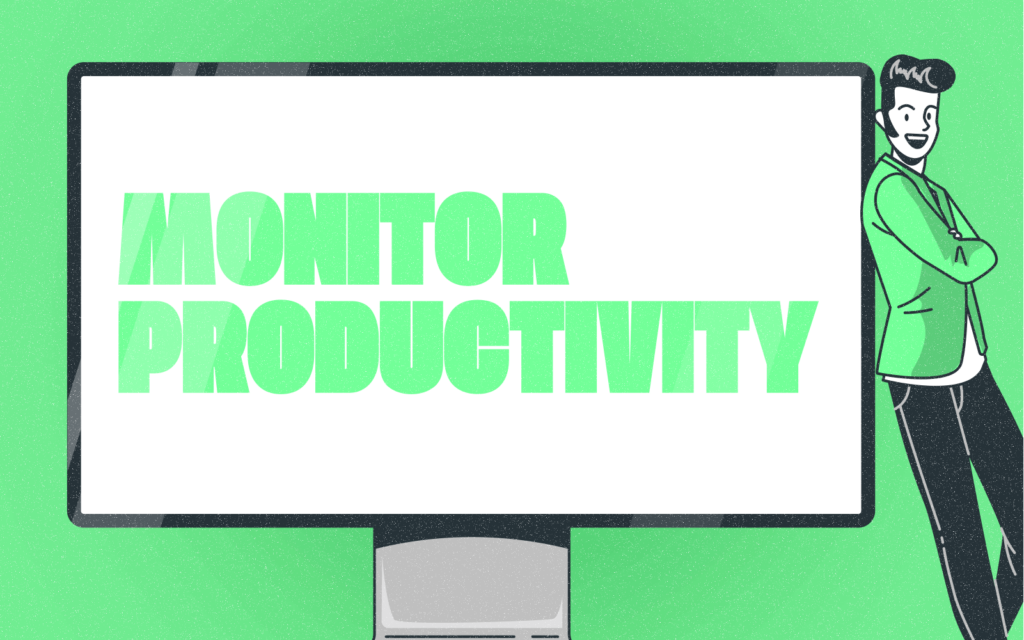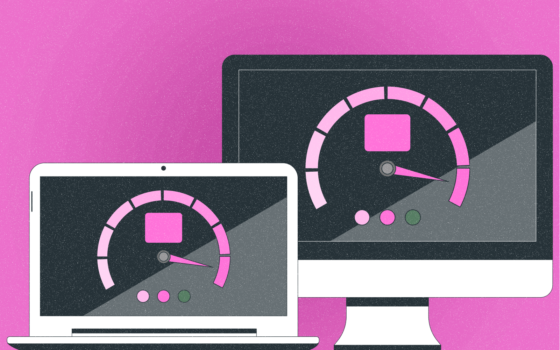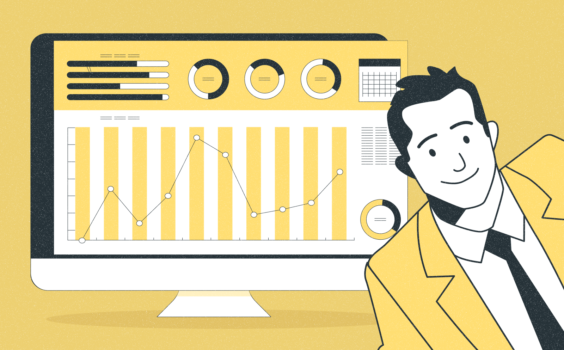

If you are an HR manager or if you have decided to pursue a career in human resources you might be well familiar with the term “Employee Productivity”. In your conversation, you most frequently use the term, right? Let’s see how it is defined by the Human Resource experts. In this blog post, we will discuss employee productivity, its determinants, and methods to monitor productivity for the success of an organization.
What Is Employee Productivity?
According to Nida & Fard, (2013) employee productivity is a calculation that indicates how much output may be produced for each unit of input. It is the log of net sales over total employees. According to Bhatti & Qureshi (2007), employee productivity is a performance indicator that includes both efficiency and effectiveness. It’s critical to figure out who the productive people are. HR managers closely monitor employees and regular employee monitoring helps in tracking employee productivity.
So, do you know the difference between an effective and efficient employee? You might be familiar with the two confusing terms: efficiency and effectiveness. If not, let me explain the difference here.
Effectiveness, Efficiency, and Productivity: Understanding the Difference
Do these three terms seem similar to you? Many people use them interchangeably. However, there are technical differences between them that any manager should know. Effective workers are those who complete their assigned tasks within the deadline and as per the company’s requirements. While on the other hand, efficient individuals complete their work before the deadline and also don’t need much supervision. Robbins differentiates vthem beautifully as effectiveness is “doing right things” and efficiency is “doing things right”. An effective worker achieves the required task, and the efficient one achieves the desired task with minimum resources.
Then who is a productive employee? I guess you got the point, right? A productive employee is both effective and efficient. In other words, a productive worker gets things done on time while using minimal resources.
7 Ways To Monitor Employee Productivity
You probably read about productivity a lot. So, as an HR manager or owner of a business how can you monitor productivity? Have you ever tried to measure and monitor productivity? If yes, then you will get more insights, if not, then do not worry, you will learn everything you need to know in this blog post.
There are various methods to measure productivity. Seven popular methods are the following:
1. Setting Targets:
The first and foremost step is to set targets for your team members. Once you have set the goals, it will become easy to monitor their progress. You can set daily, weekly, monthly, and quarterly targets accordingly. If the targets are not achieved on time, you can take corrective actions and ensure the work process is smooth.
2. Proper Communication Channel:
Effective communication is key to the success of every business. Whether it is between employer and employee or among all other memebers of the busness. Research shows that frequent downward communication helps individuals reduce frustration and improve productivity in the organization. It helps employees to meet the expectations set by the higher management. If an organization has a proper communication channel, then it might improve its productivity by communicating the concerns and issues timely and in a proper way.
Thus, it is essential to have an effective communication channel so that all members can voice their concerns and suggestions. In addition, it will help in building trust and transparency between coworkers. Proper communication will also help achieve the set targets; thus productivity is ensured.
3. Open Door Policy:
Does this term seem new to you? It shouldn’t. The open-door policy is my personal favorite. This means that the employer should be accessible to employees. This will help in building trust and transparency between the employer and the employees. The open-door policy will help ensuring that employees are comfortable in voicing their concerns and suggestions.
Did you know who coined the term open-door policy? The term was created by Peter Drucker, who is the father of modern management. He said that “The most important thing in communication is to hear what isn’t being said.” The open-door policy is a perfect example of this.
Get more out of your business
Get the best employee engagement content every week via mailing list
4. Feedback System:
According to a recent survey, 65% of employees want their supervisors to give more feedback and 75% of employees consider feedback an important component of learning and development, as well as being a productive worker.
Another important way to monitor productivity is to have a proper feedback system in place. This will help in identifying the areas where employees need improvement. Feedback will help in ensuring that they are aware of their performance and the areas where they need to improve. It will also help in motivating them to work harder. The benefits of a feedback system for productivity are shown in the graph below:
According to the data, employees who received strong feedback were 12.5% more productive than those who did not. (Picture Source: https://www.zippia.com)
5. Training and Development:
Interesting to see that almost 74% of employees are willing to learn new skills or re-train to stay employable.
Every firm’s ultimate objective is to generate high revenue while also maximizing profit, and a crucial instrument for this is an efficient and productive workforce. Thus, only a workforce that has received the required training and development, is efficient and productive. The image below explains the concept further.
A proper training and development policy is an effective way to monitor productivity. This will help in ensuring that employees are up to date with the latest trends and technology. It will also help in ensuring that they are equipped with the necessary skills and knowledge to perform their jobs. Training and development will help to motivate workers toward higher levels of performance.
6. Rewards and Recognition:
According to a recent survey, employees’ happiness boosts productivity by 31%. When their efforts are recognized and rewarded, they feel much more motivated. Thus, recognition and rewards play an important role in monitoring productivity.
When an organization has a proper reward and recognition system in place, it can motivate its employees to work harder. Rewards and recognition will help to ensure that they are motivated to achieve the set targets. It will also make them feel valued and appreciated for their hard work.
7. Proper Performance Management System:
The fourth method for monitoring employee productivity is to have a good performance management system in place. This will help in tracking performance and identifying the areas where they need to increase productivity.
2 Popular Determinants of Employee Productivity
Have you ever thought about what factors determine productivity? If not, below you will read the two determinants of productivity; quality of life and quality of work-life balance:
1. Quality of Life:
The first important determinant of productivity is the employee’s quality of life. Quality of life influences their productivity at work. You might have personally experienced that. For examply when you arrive at the office happy, then your workday goes well, right? Someone said “People only become truly productive when they are free to choose what they do.” This means that the quality of an employee’s life determines his or her productivity. If an individual worker is satisfied with his or her life, he or she will be more productive at work. This is because he or she will be more motivated to work hard and can focus on the task better. A happy person will also be more likely to stay with the organization for a longer time. Thus, the quality of employee’s life affects productivity, a happy employee is a productive one.
2. Quality of Work-Life Balance:
The second determinant of employee productivity is the quality of work-life balance. Quality of work-life balance refers to the balance between one’s work and personal life. An organization needs to ensure that its workers have a good work-life balance. A good work-life balance will ensure that the employees are not overworked and stressed out. A worker who has a good work-life balance will be more productive.
How to Improve Employee Productivity?
Now, let’s read about the ways employee productivity can be improved. But first, lets take a look at some statistics about employee productivity.
Paul J. Meyer once said, “Productivity is never an accident. It is always the result of a commitment to excellence, intelligent planning, and focused effort.” This statement indicates that productivity is not something that can be achieved without hard work and dedication.
As we all know, productivity is crucial to the success of any organization. The higher the individual’s productivity, the higher the profits of the organization will be.
Various methods can be used to improve employee productivity. Some of these methods are discussed below:
1. Training
One of the most important ways to improve productivity is by providing employee training. Properly trained workers will be able to do their jobs more efficiently and effectively. Thus, organizations need to invest in training their employees.
2. Leadership
Leadership also plays an important role in improving productivity. Leaders can motivate and inspire employees. A motivated and inspired employee tends to perform better.
3. Motivation
Motivation is also an important determinant of a worker’s productivity. This is because motivated employees will be more likely to put in extra effort and work harder.
What Is Employee Engagement?
Employee engagement is a measure of how motivated and invested an employee is in their work. An engaged worker is enthusiastic about their job and committed to their company’s success.
Measuring Employee Engagement
You’ve learned the ways to measure productivity then, let’s learn to measure employee engagement. Below are several ways to measure engagement.
One common method is to survey workers on various aspects of their job, such as job satisfaction, motivation, and commitment.
Another way to measure engagement is to track individuals’ behavior. This can be done through performance reviews, absenteeism, and turnover rates.
So, how can you tell if your workers are engaged? Here are a few signs:
- Your workers are passionate about their work and take pride in their accomplishments.
- They are committed to your company’s success and are always looking for ways to improve.
- They have a positive attitude and are eager to come to work each day.
- They are willing to go above and beyond their job duties.
If you see these signs in your employees, then they’re likely engaged in their work. Employee engagement is important because it leads to many positive outcomes for your business.
What Is Productivity Tracking?
Productivity tracking is the process of measuring, recording, and analyzing productivity. It helps businesses identify areas where they are struggling and find ways to improve performance.
There are a few different ways to track productivity, but the most common is through software that records activity and provides data that can be analyzed.
Types of Productivity Tracking Software
Do you use any productivity tracking software? Below are some popular productivity tracking software:
Time Tracking Software:
Time tracking software tracks the amount of time a worker spends on work.
Productivity Tracking Software:
Employee productivity tracking software is a type of time tracking software that specifically tracks productivity. It can be used to measure how much work an individual is doing, how efficiently they are working, and what type of work is taking up the most time.
This type of software is often used in conjunction with time tracking software to give a complete picture of the overall productivity.
Advantages of Productivity Tracking
There are a few advantages of tracking productivity, including:
- Helping businesses identify areas where they are struggling
- Finding ways to improve performance
- Providing data that can be used to make decisions about compensation
- Allowing businesses to monitor the effectiveness of new policies or procedures
Disadvantages of Productivity Tracking
There are a few disadvantages of tracking productivity as well, including:
- The possibility of decreased morale
- The potential for abuse of the system
- The need for ongoing training and support
- The cost of the software
Productivity tracking software can be a valuable tool for businesses, but it’s important to weigh the pros and cons before implementing a system.
What Is Employee Monitoring?
Employee monitoring is the act of tracking their behavior through the use of technology. This can include monitoring software usage, internet activity, email, and even phone calls. The goal of monitoring is to improve productivity and ensure that company policy is being followed.
What Are Popular Employee Monitoring Software?
Some popular monitoring software includes:
- InterGuard
- Work Examiner
- DeskTime
- ActivTrak
How to Implement Employee Monitoring?
If you’re thinking of implementing monitoring in your business, there are a few things to keep in mind. First, you’ll need to decide what you want to track and why. This will help you select the right software for your needs. You’ll also need to create a policy that outlines how worker data will be collected and used. Finally, make sure to communicate the changes to your employees so there are no surprises.
Through proper task management, productivity monitoring skills, and monitoring tools, you can improve your team’s productivity. Productivity monitoring software can be beyond helpful if you learn to use it properly.


